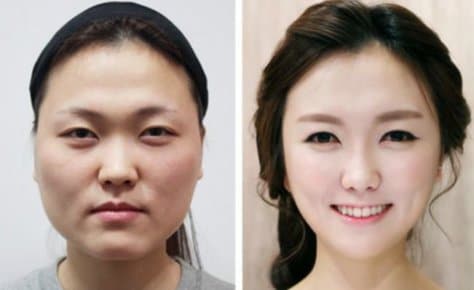Jaw Reduction Surgery – Overview
Jaw reduction surgery, also known as jaw shaving, is a type of surgery that is performed to narrow the jawline and make it V-shaped.
A wide lower face is often considered a masculine trait in some cultures, especially in Asia so women with the attributes may want to consider jaw reduction to achieve a more feminine appearance.
A wide lower face or U-shaped jaw can be caused by a wide mandibular bone or oversized masseter muscle. Depending on the cause of the prominent jaw, surgical and non-surgical techniques options are available to create a slim jawline smoothly and naturally.
If the masseter muscles are oversized, application of Botox injections can help to reduce the muscles and form a V-shaped jaw whereas a wide mandibular bone requires jaw reduction surgery to reduce the size of the bones.
Jaw Reduction Surgery
First and foremost, the patient is examined to determine whether the wide jaw is due to bone size, masseter muscle or both. To this end, X-rays and 3D CT scans are taken at various positions and carefully evaluated. The outcome of the evaluation will form the basis for a treatment plan to achieve the desired aesthetic results. As stated earlier, surgery is required if the mandibular bone is wide.
Jaw reduction surgery is performed under general anesthesia, which implies that you will be put to sleep while the surgery is ongoing. The surgeon can perform the surgery via the mouth and this is optimal as it leaves no visible scars.
To avoid excessive bone resection, a guarded laser saw is first used to mark the proposed area for the procedure. After this, the bone resection is then performed with the appropriate size of laser saws. The incisions are closed with dissolvable stitches.
Related: Types of Surgery
Jaw Reduction Surgery Risks and Complications
Like every other surgical procedure, there are risks of complications associated with jaw reduction surgery. Some of the possible complications are as follows:
1. Damage to Inferior Alveolar Nerve: The inferior alveolar nerve provides sensation to the lower teeth and lips. It is the most important anatomic structure during jaw shaving surgery and utmost care should be taken to avoid damage to the nerve. Injury to the nerve leads to permanent numbness and damage to the lower lip.
2. Failure to reattach the mentalis muscle: This is another possible complication during jaw reduction surgery. The mentalis muscle helps to elevate the lower lip and chin. Failure to reattach the mentalis muscles will lead to the chin and lower lip to sag, causing permanent damage.
3. Infection: Infection may also result following the surgery. Preventive antibiotics can be taken to reduce the risk of this complication.
4. Hematoma: This refers to a solid swelling of clotted blood within the tissues.
5. Asymmetry: Achieving perfect symmetry is very difficult. Even if the surgeon takes the utmost care in marking out the areas on the jawline that he or she will trim, asymmetry may still occur. If this does happen, however, it can be corrected in a secondary surgery.
Jaw Reduction Surgery Cost
The total cost for jaw reduction surgery depends on a lot of factors such as the anesthetic fee, private hospital fee, private operating facility fee, the extent of surgery required. The total cost of the procedure is around $6500 – $7500.

jaw reduction surgery
Jaw Reduction Without Surgery
Non-surgical techniques are essentially limited to cases in which only the masseter muscles are enlarged. Factors that can cause the masseter muscle to increase include genetics, teeth clenching, repeated gum chewing, bruxism.
A convenient method to treat an enlarged muscle is through the use of botox injections. Botox is injected into the enlarged muscle, weakening it so it slowly becomes smaller through atrophy over several months. There is no down-time and improvement is gradual—individuals who interact with the patient may never know that a plastic surgical procedure was performed
The use of Botox for jaw reduction has been studied scientifically. Improvement is generally not seen for at least 2 – 3 weeks. Peak improvement occurs at months 3 to 9 with good results still observable at one year in many patients.
Read More: Lipoma Removal Cost


